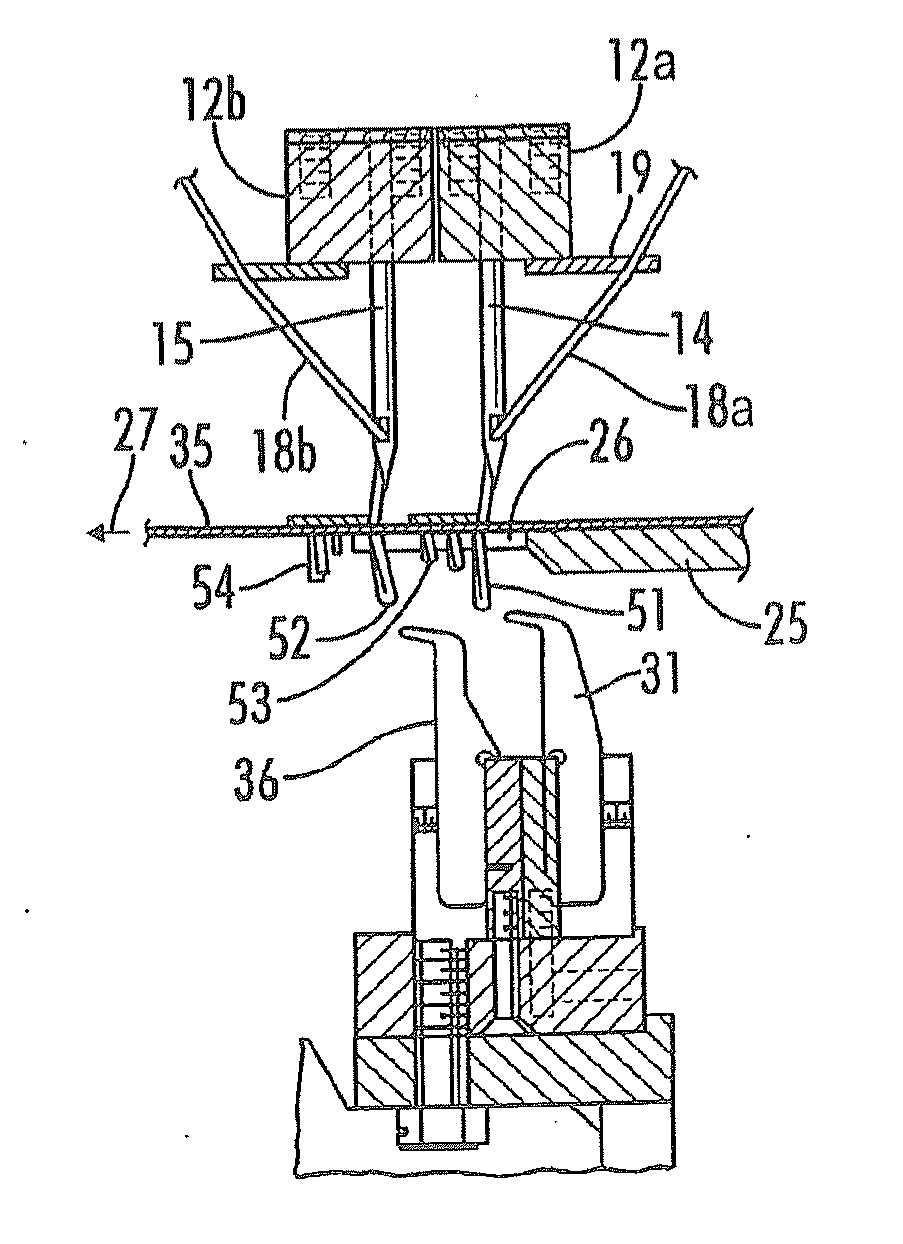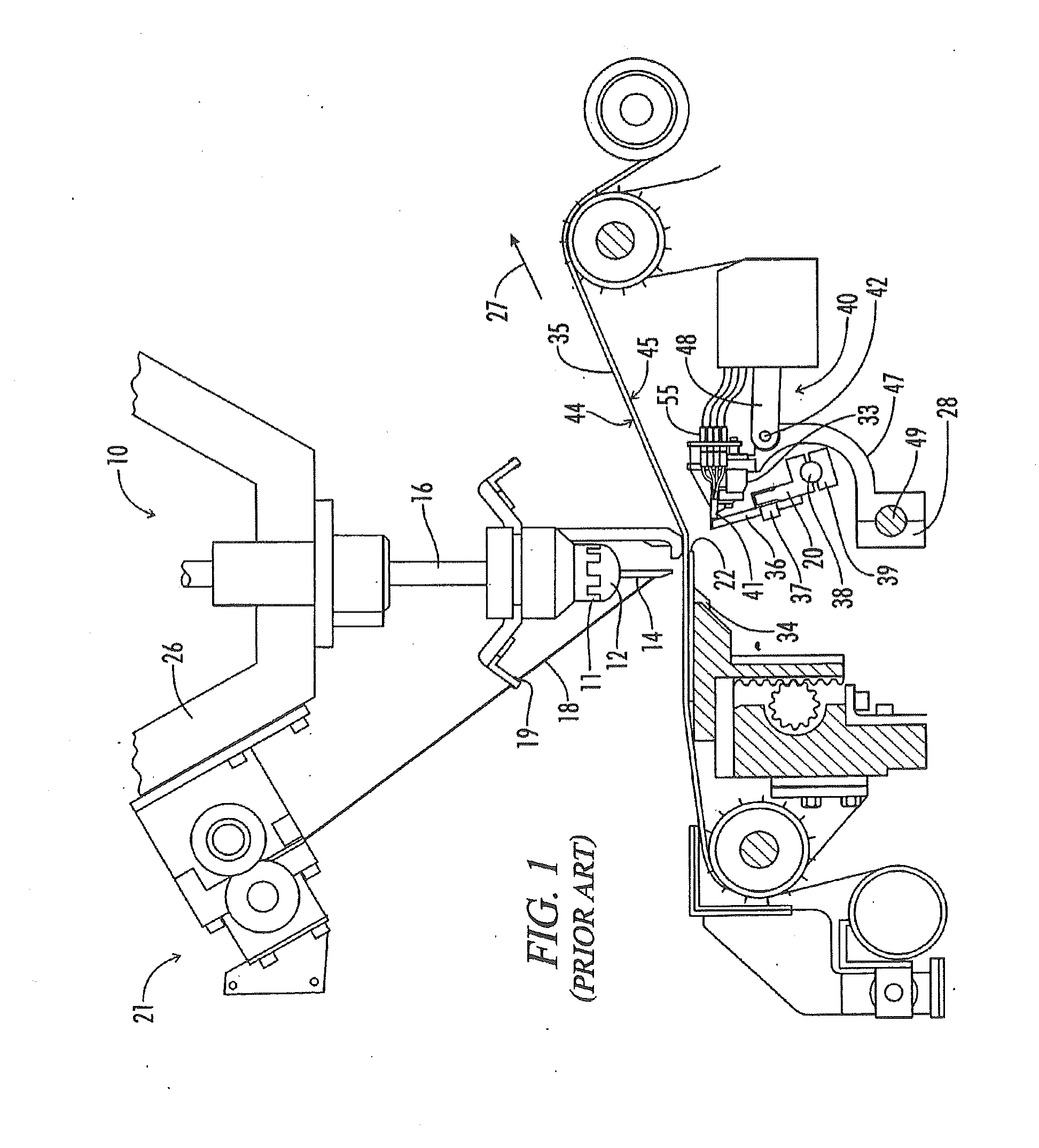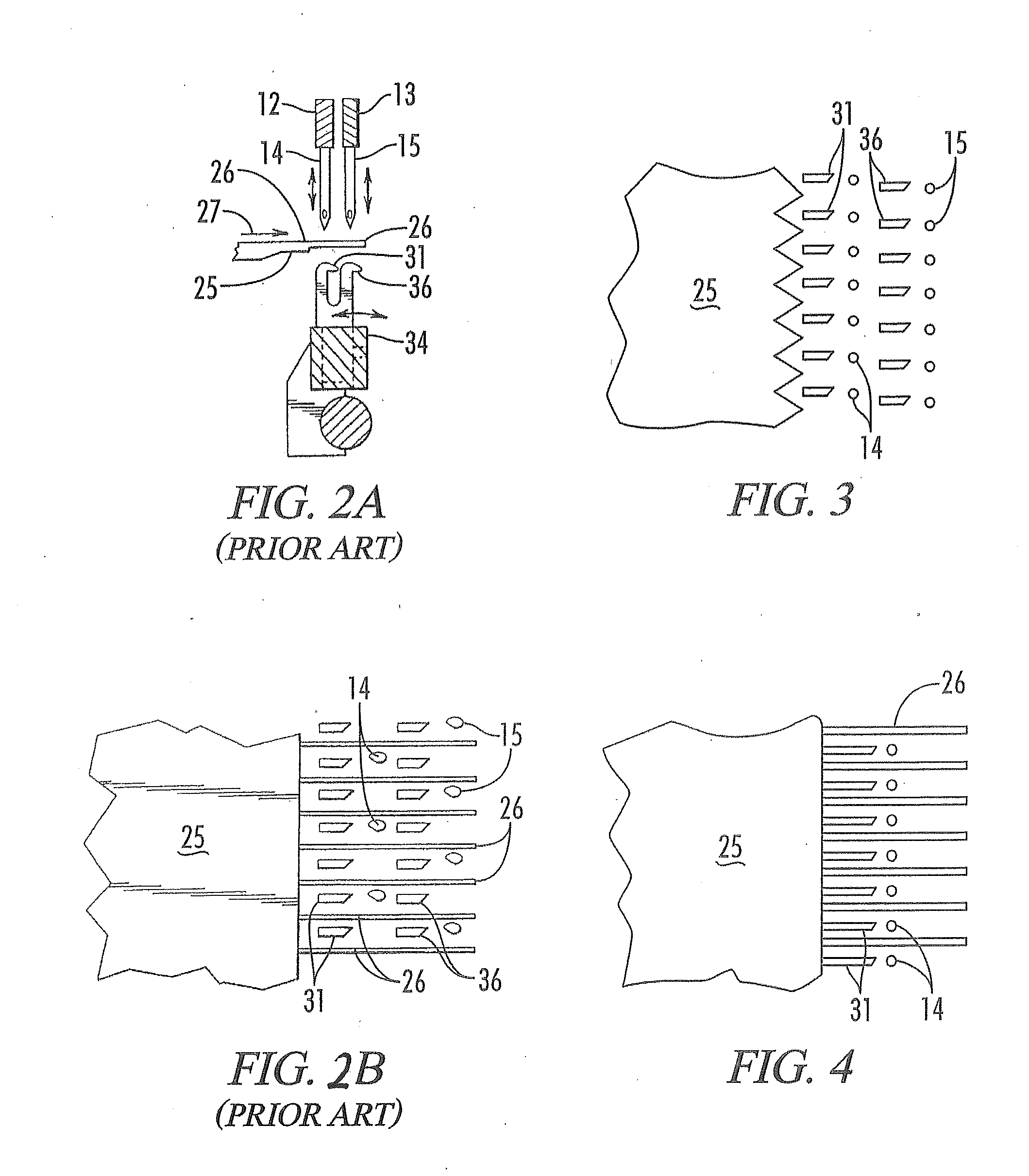Method for Selective Display of Yarn in a Tufted Fabric with Offset Rows of Needles
a tufting machine and offset technology, applied in the field of tufting machines, can solve the problems of excessive yarn “wasted” on the back of the greige, maintenance of the tufting machine, and the production speed of those fabrics, so as to reduce the need for tacking stitches, reduce the cost of the tufting machine, and ensure the effect of uniformity
- Summary
- Abstract
- Description
- Claims
- Application Information
AI Technical Summary
Benefits of technology
Problems solved by technology
Method used
Image
Examples
Embodiment Construction
[0047]Referring now to the drawings in more detail, FIG. 1 discloses a multiple needle tufting machine 10 including an elongated transverse needle bar carrier 11 supporting a needle bar 12. The needle bar 12 supports a row of transversely spaced needles 14. The needle bar carrier 11 is connected to a plurality of push rods 16 adapted to be vertically reciprocated by conventional needle drive mechanism, not shown, within the upper housing 26.
[0048]Yarns 18 are supplied to the corresponding needles 14 through corresponding apertures in the yarn guide plate 19 from a yarn supply, not shown, such as yarn feed rolls, beams, creels, or other known yarn supply means, preferably passing through pattern yarn feed control 21. The yarn feed control 21 interfaces with a controller to feed yarns in accordance with pattern information and in synchronization with the needle drive, shifters, yarn seizing / cutting mechanisms and backing fabric feed.
[0049]The needle bar 12 may be fixedly mounted to th...
PUM
 Login to View More
Login to View More Abstract
Description
Claims
Application Information
 Login to View More
Login to View More - R&D
- Intellectual Property
- Life Sciences
- Materials
- Tech Scout
- Unparalleled Data Quality
- Higher Quality Content
- 60% Fewer Hallucinations
Browse by: Latest US Patents, China's latest patents, Technical Efficacy Thesaurus, Application Domain, Technology Topic, Popular Technical Reports.
© 2025 PatSnap. All rights reserved.Legal|Privacy policy|Modern Slavery Act Transparency Statement|Sitemap|About US| Contact US: help@patsnap.com



